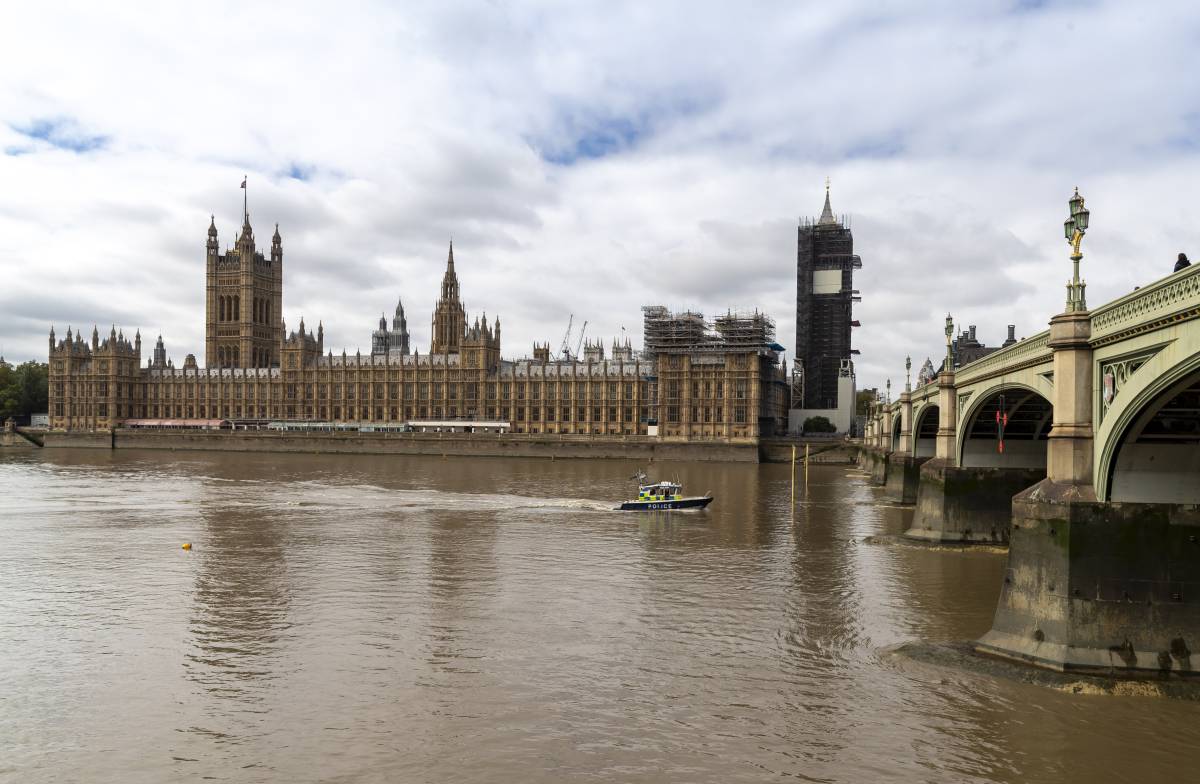It has now been nine years since a parliamentary report stated that the Palace of Westminster, which was built to replace a medieval complex that burned down in 1834, was riddled with fire-safety issues, leaking roofs, and asbestos, reports Asian Lite News
MPs and peers would be barred from the Palace of Westminster for a period of 20 years, under shocking new restoration proposals that might cost taxpayers a whopping £14 billion. The plans, which would see legislators ‘decanted’ into temporary quarters for the next 20 years, are based on the most extensive survey work yet on the decaying 19th Century World Heritage Site.
However, the timetable, which is claimed to be given out in preliminary estimates by the official group drawing up the renovation plans, will enrage many MPs, who were originally told the decant would last only six years. There will also be outrage at the projected £14 billion cost of the improvements, which are set to begin in 2027, after initial estimates placed the sum at £4 billion, according to the various media reports.
Riddled with fire-safety issues, leaking roofs
It has now been nine years since a parliamentary report stated that the Palace of Westminster, which was built to replace a medieval complex that burned down in 1834, was riddled with fire-safety issues, leaking roofs, and asbestos that if it ‘were not a listed building of the highest heritage value, its owners would probably be advised to demolish and rebuild.’
Four years ago that the Victorian palace’s plumbing, which was constructed in 1876, was so inadequate that sewage was flowing into a basement. More extensive examinations have now revealed asbestos in 2,500 sites, which will take around 300 workers at least two and a half years to remove or make safe, according to reports.
Before the vote in 2018, some MPs argued that rebuilding should continue while they were still inside the UNESCO World Heritage site. However, that was ruled out after an assessment of the required building work by the Restoration & Renewal Sponsor Body, which included MPs, peers, historians, and infrastructure specialists, found that it would drag out the process for more than 30 years.
As a result, among the possibilities being considered is one that would require MPs to leave Westminster Palace for 20 years. A more popular proposal would presumably oblige MPs and peers to leave the building for a period of 12 to 15 years.
A shortage of qualified craftspeople, such as stonemasons and plasterers, is another issue that may cause restoration work to be delayed. According to a poll of historic contractors, finding professionals in furniture, textile and painting restoration, stained glass conservation, and clock manufacture in the UK would be difficult. In addition, some of the historic sector trades that would be required for the project have become “extinct” or “critically endangered.”
A total of 2,343 rooms, spaces and conference areas were examined over the summer, with experts recording thousands of issues including cracks in stonework and widespread water damage. The intricate network of outdated electrical and mechanical systems was analysed.
Many of the historic features, including original Victorian stained-glass windows which are warping and sagging due to age, have issues. The specialists also studied the enormous basement and the miles of outdated and interweaving gas, electrics, water, sewage, and heating pipes to get up to date records on the problems that need fixing.
Acoustics experts considered how to improve audibility within the building; walked 240 km, measuring 80 rooms, running 300 individual acoustics tests, taking 2,000 measurements.
Experts in ecology and door specialists from Manchester, window surveyors from Glasgow and architects and engineers from across London, in addition to historic surveyors and specialists from Cambridge, Suffolk and Hampshire, were involved in the meticulous examination.
The Palace of Westminster has survived a bombing threat. Around midnight on November 4, 1605, Guy Fawkes was found in one of its cellars with barrels of gunpowder. The conspiracy by persecuted Catholics against the Protestant dispensation was to blow up the building. Fawkes and his plotters were executed for treason. Thus, every November 5, the Britons mark the day by burning his effigies.

